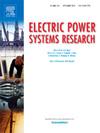物理信息神经网络:即插即用集成到电力系统动态模拟
IF 4.2
3区 工程技术
Q2 ENGINEERING, ELECTRICAL & ELECTRONIC
引用次数: 0
摘要
时域模拟对于确保电力系统的稳定性和避免可能导致停电的关键情况至关重要。由于额外的不确定性、非线性和状态,下一代电力系统需要显著增加这些模拟的计算成本和复杂性。物理信息神经网络(PINN)已被证明可以将单组分模拟的速度提高几个数量级。然而,由于系统的动力学依赖于多个组件,因此将它们应用于当前的时域仿真求解器尤其具有挑战性。利用一种新的训练公式,引入了将pin神经网络集成到多分量时域仿真中的第一步。我们提出pinn作为单个组件的其他经典数值方法的替代方法。经过训练后,这些神经网络在较长的时间步长内更准确地近似组件动态。作为一种隐式的、与瞬态仿真工作流程一致的方法,pinn通过显著增加所用的时间步来加快仿真时间。为了解释清楚,我们展示了使用IEEE 9总线系统的pin n和数值解决方法的几种组合的训练,集成和仿真框架,尽管该方法同样适用于任何电力系统规模。本文章由计算机程序翻译,如有差异,请以英文原文为准。
Physics-Informed Neural Networks: A plug and play integration into power system dynamic simulations
Time-domain simulations are crucial for ensuring power system stability and avoiding critical scenarios that could lead to blackouts. The next-generation power systems require a significant increase in the computational cost and complexity of these simulations due to additional degrees of uncertainty, non-linearity and states. Physics-Informed Neural Networks (PINN) have been shown to accelerate single-component simulations by several orders of magnitude. However, their application to current time-domain simulation solvers has been particularly challenging since the system’s dynamics depend on multiple components. Using a new training formulation, this paper introduces the first natural step to integrate PINNs into multi-component time-domain simulations. We propose PINNs as an alternative to other classical numerical methods for individual components. Once trained, these neural networks approximate component dynamics more accurately for longer time steps. Formulated as an implicit and consistent method with the transient simulation workflow, PINNs speed up simulation time by significantly increasing the time steps used. For explanation clarity, we demonstrate the training, integration, and simulation framework for several combinations of PINNs and numerical solution methods using the IEEE 9-bus system, although the method applies equally well to any power system size.
求助全文
通过发布文献求助,成功后即可免费获取论文全文。
去求助
来源期刊

Electric Power Systems Research
工程技术-工程:电子与电气
CiteScore
7.50
自引率
17.90%
发文量
963
审稿时长
3.8 months
期刊介绍:
Electric Power Systems Research is an international medium for the publication of original papers concerned with the generation, transmission, distribution and utilization of electrical energy. The journal aims at presenting important results of work in this field, whether in the form of applied research, development of new procedures or components, orginal application of existing knowledge or new designapproaches. The scope of Electric Power Systems Research is broad, encompassing all aspects of electric power systems. The following list of topics is not intended to be exhaustive, but rather to indicate topics that fall within the journal purview.
• Generation techniques ranging from advances in conventional electromechanical methods, through nuclear power generation, to renewable energy generation.
• Transmission, spanning the broad area from UHV (ac and dc) to network operation and protection, line routing and design.
• Substation work: equipment design, protection and control systems.
• Distribution techniques, equipment development, and smart grids.
• The utilization area from energy efficiency to distributed load levelling techniques.
• Systems studies including control techniques, planning, optimization methods, stability, security assessment and insulation coordination.
 求助内容:
求助内容: 应助结果提醒方式:
应助结果提醒方式:


